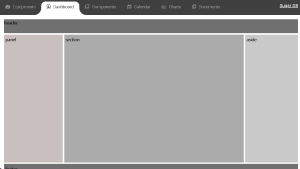Risks
- If multi-period optimization has early convergence issues then we will need to rapidly develop heuristics – this is a timeline risk that could push back development.
System Changes
- Removed the building of a custom grid-lab d file processing tool because a parser already exists within SUGAR.
Schedule Changes
- None
Please write a paragraph or two describing how the product solution you are designing will meet a specified need…
Part A.
Microgrids have significant implications for social dynamics as they can empower local communities, promote energy independence, and foster collaborative decision-making. Improving microgrids and making them easier to work with will help communities to control their power efficiently and cater their grids to their own needs, ensuring that stakeholders have a voice in the planning and operation of their energy. Moreover, by finding ways to harness renewable power more effectively and making wind and solar more predictable, we are increasing the potential reach of clean energy to underserved communities where energy is scarce, thereby promoting social inclusion and cohesion. Overall, power grids are an overlooked, yet essential way to connect distant social groups through the sharing of essential resources and making the development and control of those grids more intuitive will hopefully connect more communities to the power we take for granted.
Part B.
Microgrids have significant implications for social dynamics as they can empower local communities, promote energy independence, and foster collaborative decision-making. Improving microgrids and making them easier to work with will help communities to control their power efficiently and cater their grids to their own needs, ensuring that stakeholders have a voice in the planning and operation of their energy. Moreover, by finding ways to harness renewable power more effectively and making wind and solar more predictable, we are increasing the potential reach of clean energy to underserved communities where energy is scarce, thereby promoting social inclusion and cohesion. Overall, power grids are an overlooked, yet essential way to connect distant social groups through the sharing of essential resources and making the development and control of those grids more intuitive will hopefully connect more communities to the power we take for granted.
Part C:
Our microgrid energy management tool finds the most economically optimal dispatch of the battery and generators in the system. This saves the operator money which transfers directly to cost-saving for electricity consumers. Furthermore, the battery dispatch enables renewables to be more economic by charging during periods of excess generation and discharging during periods of low generation to meet demand.

